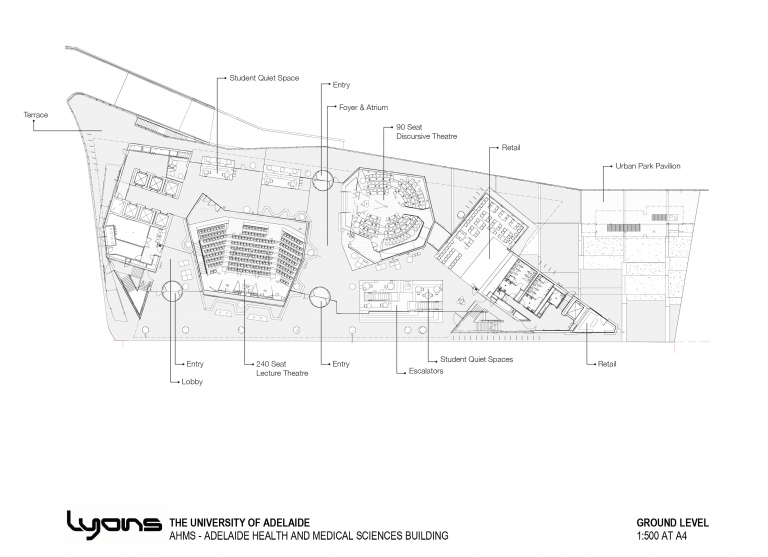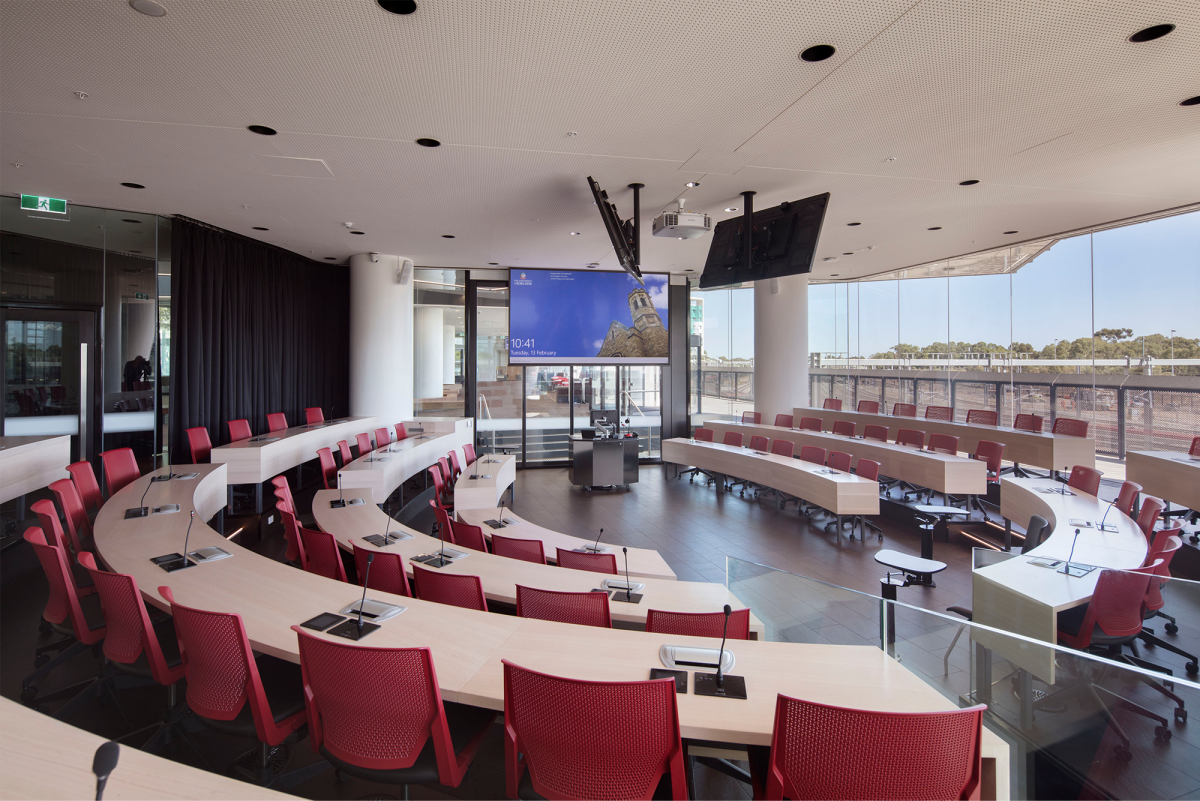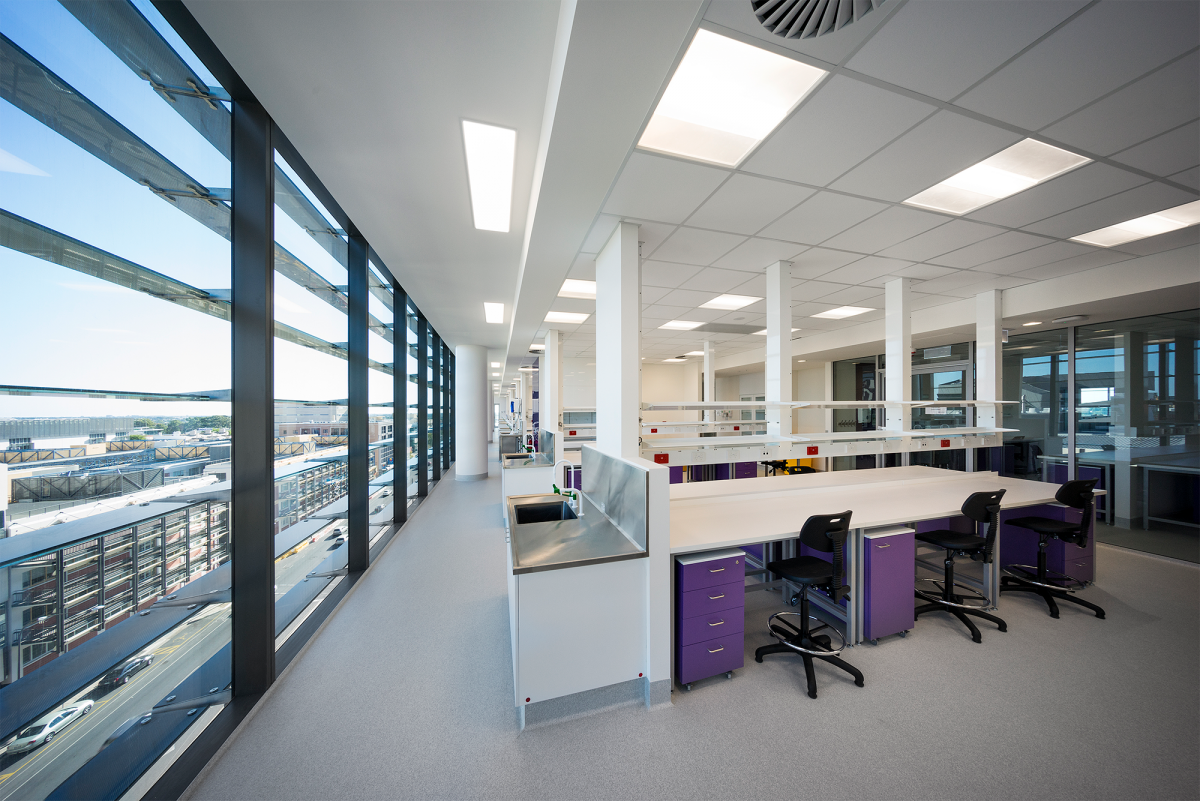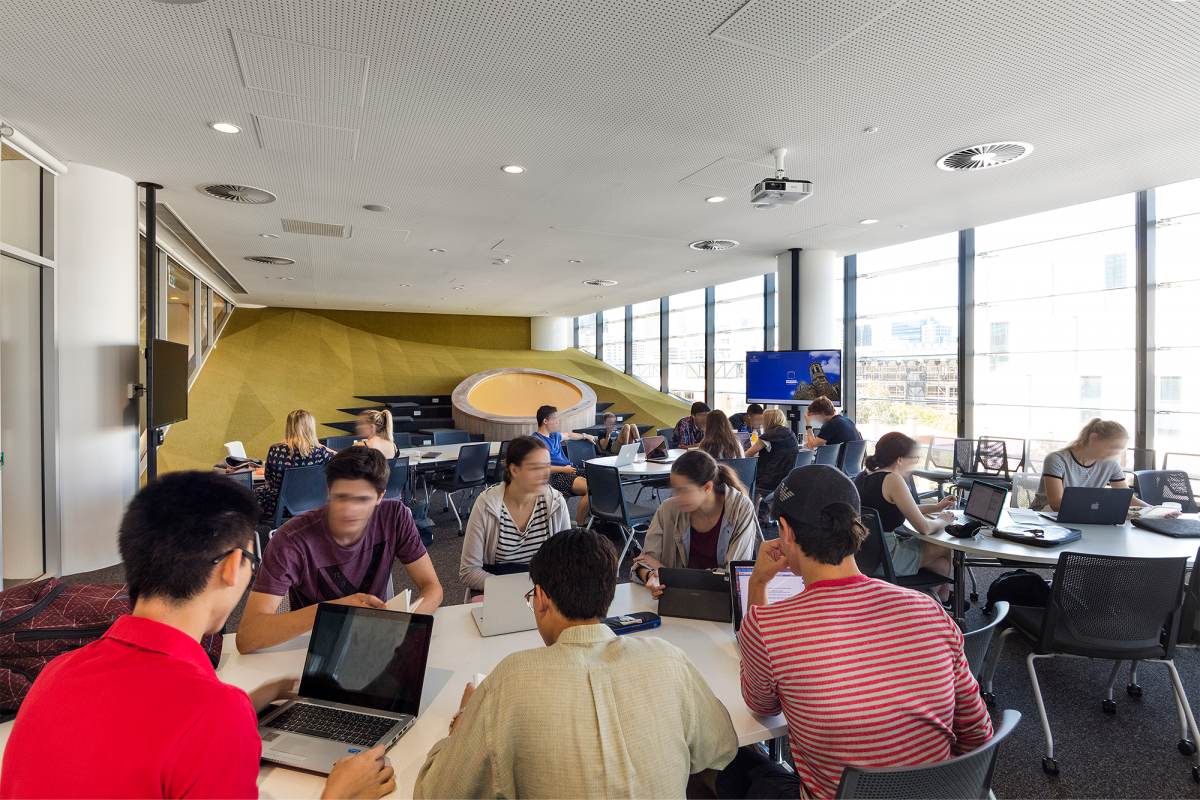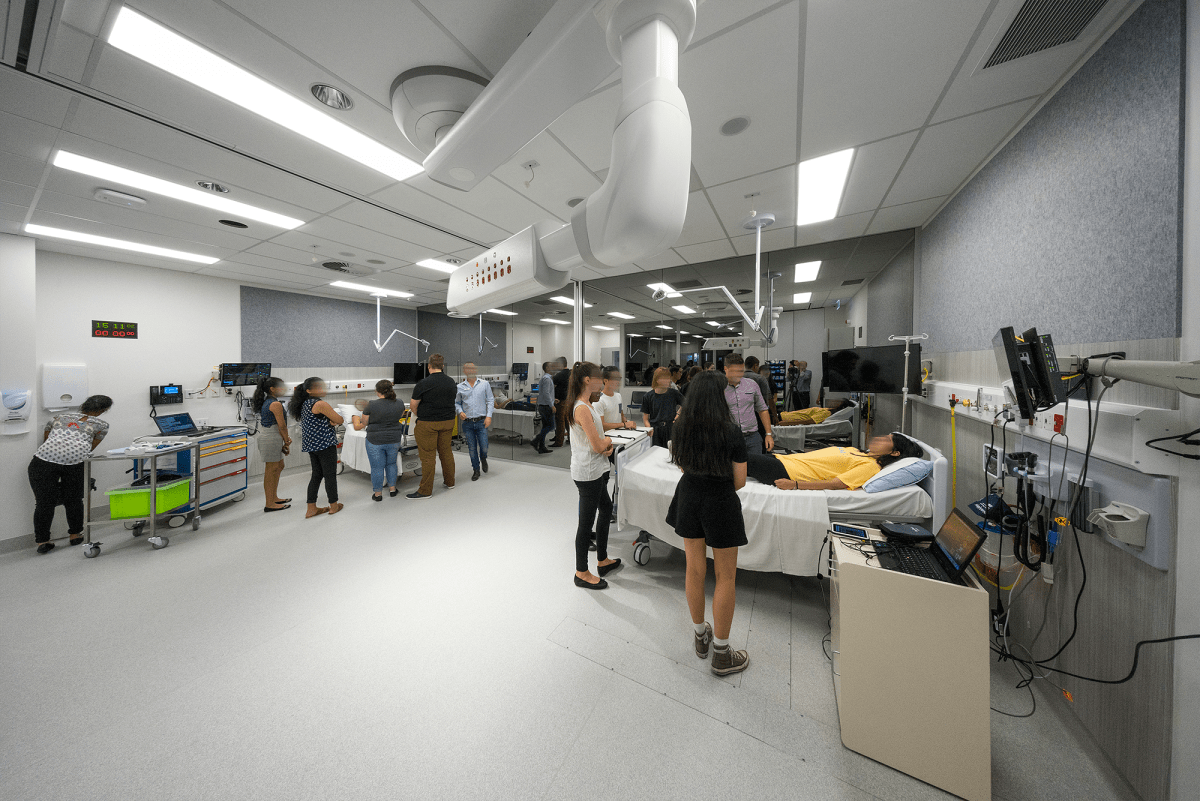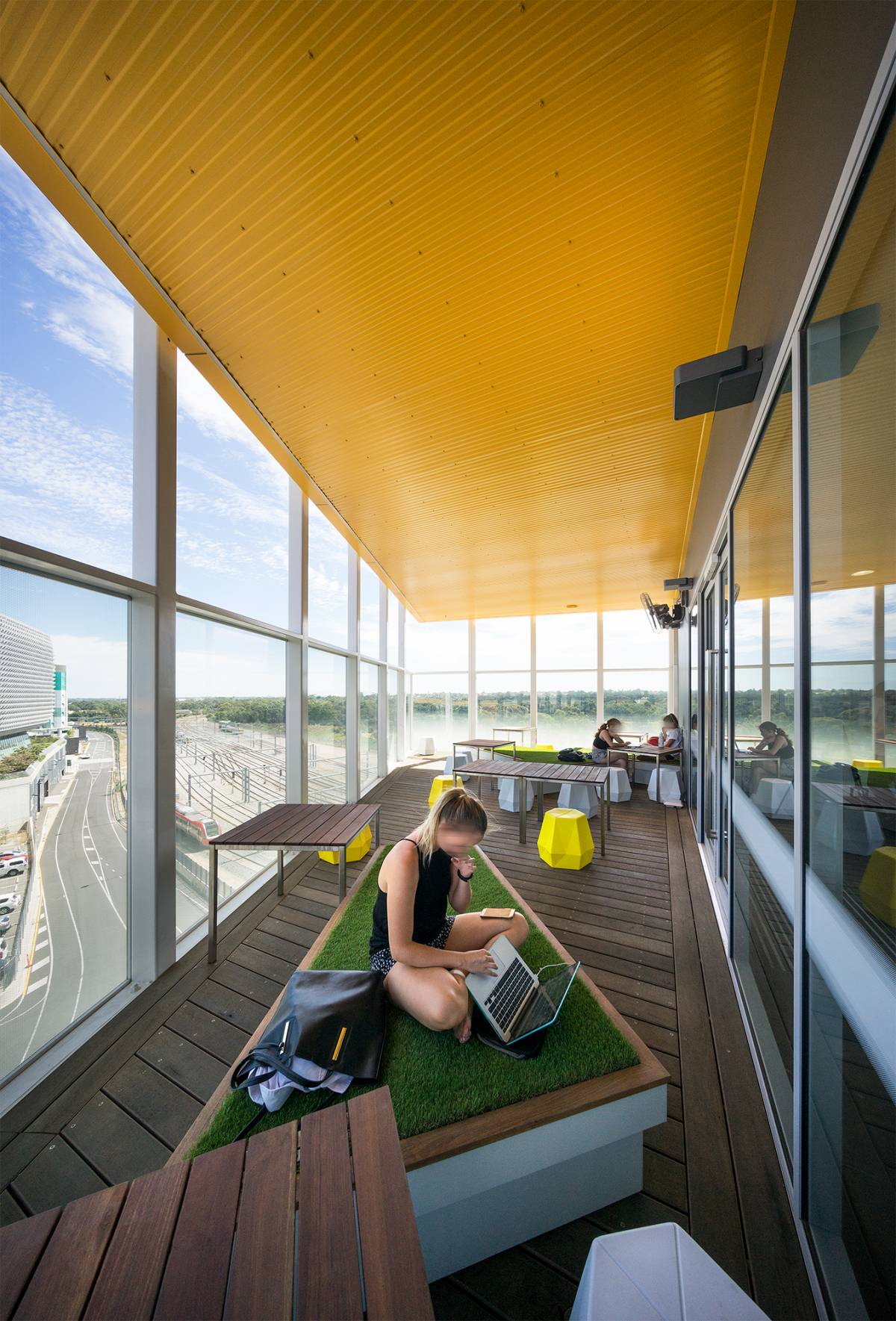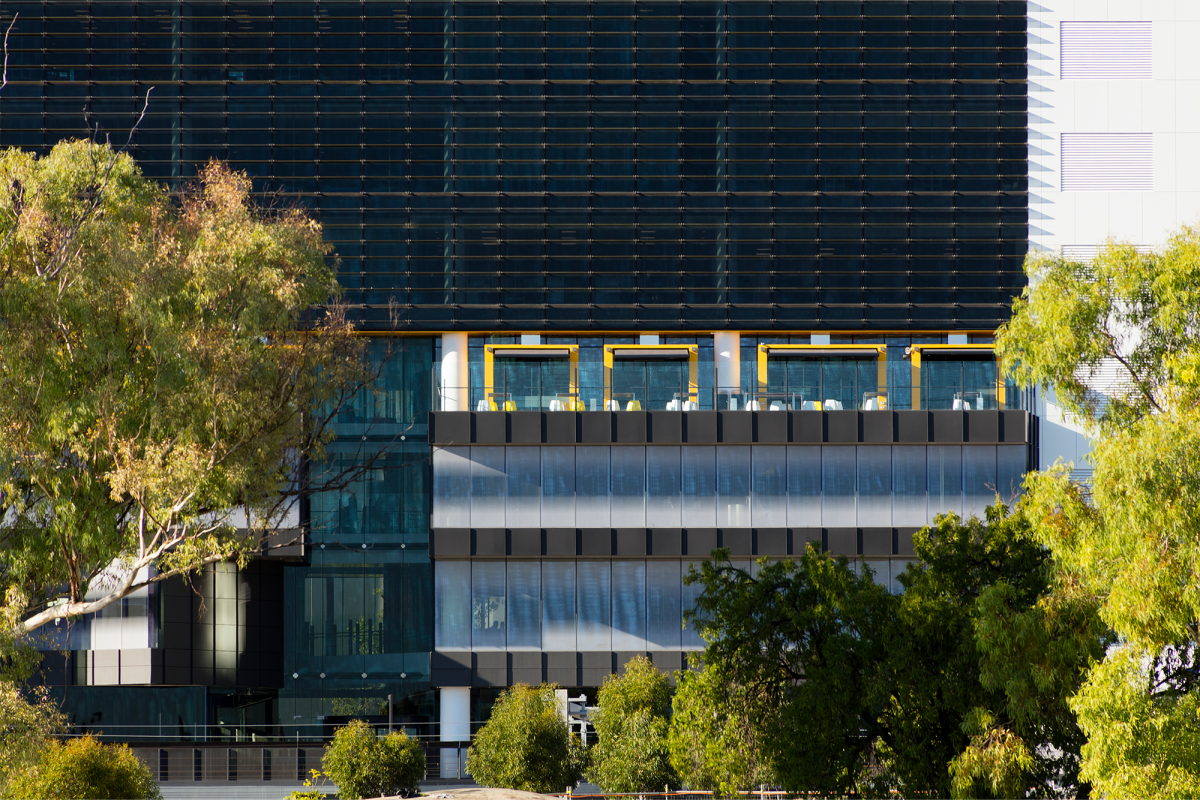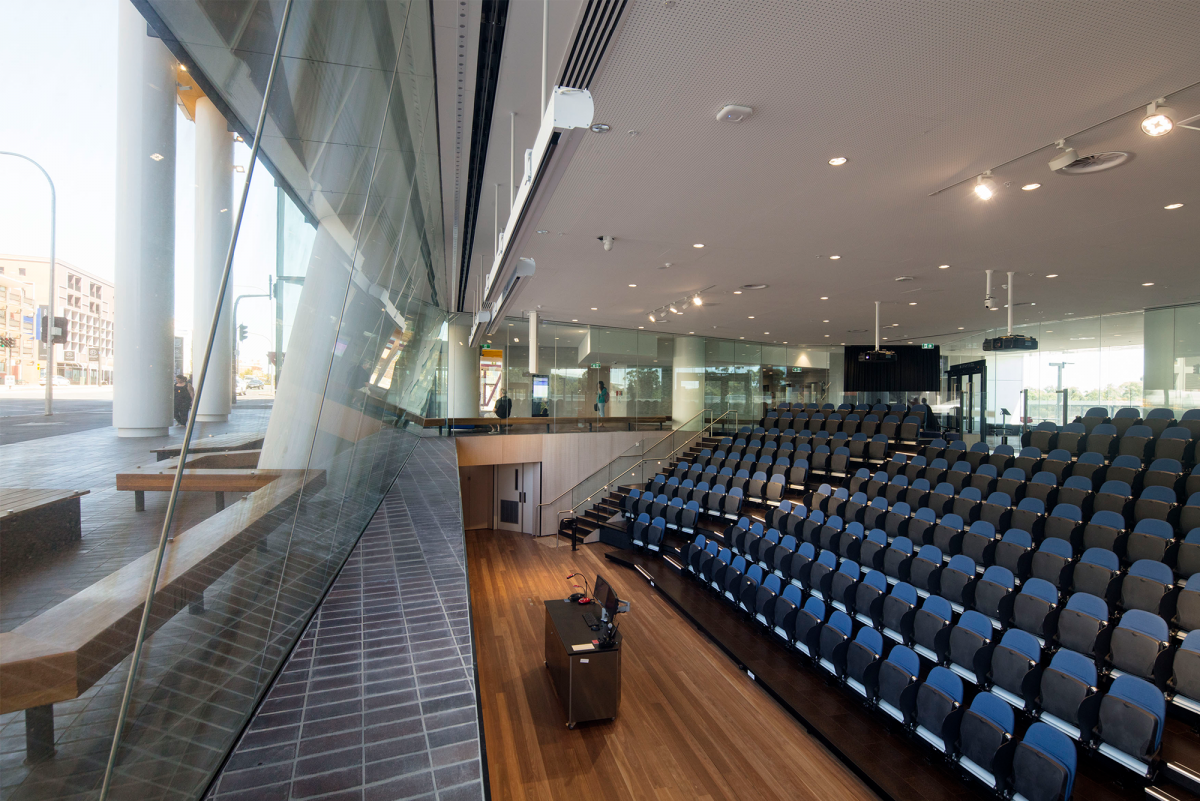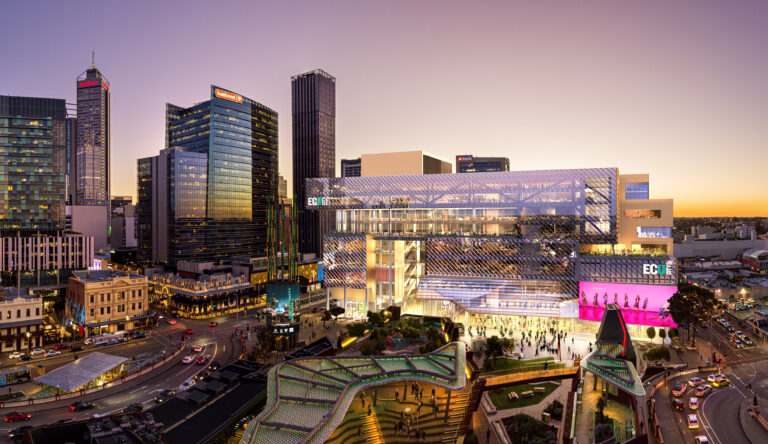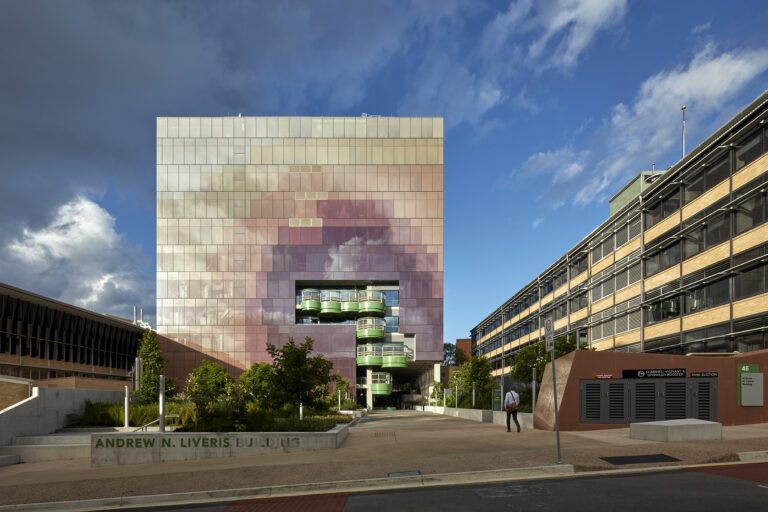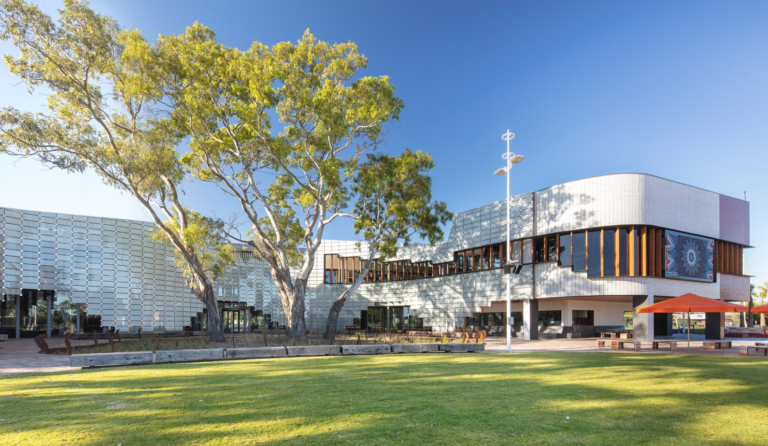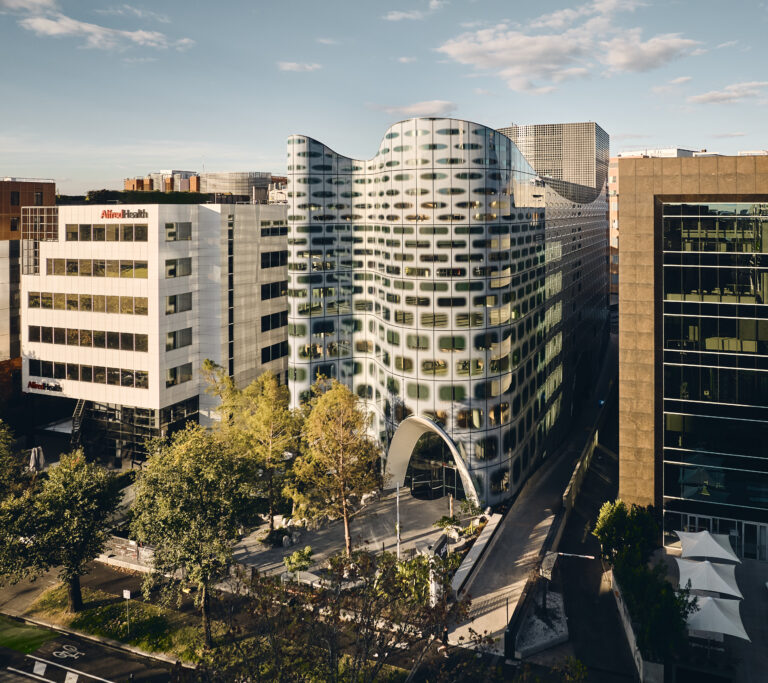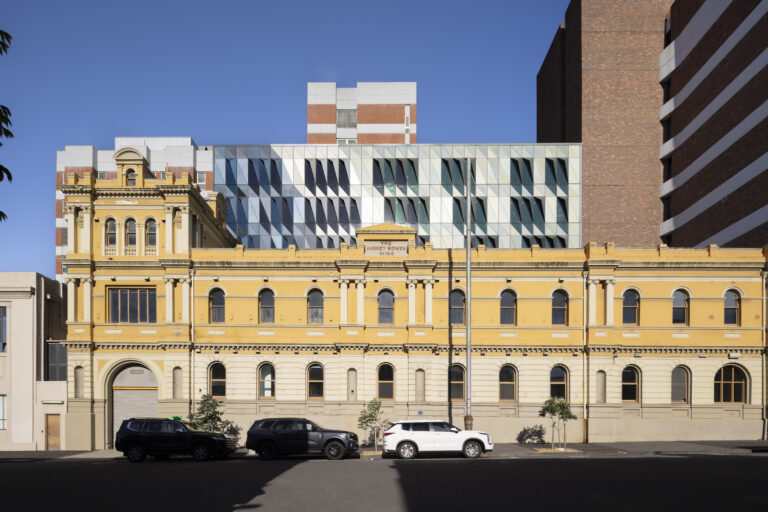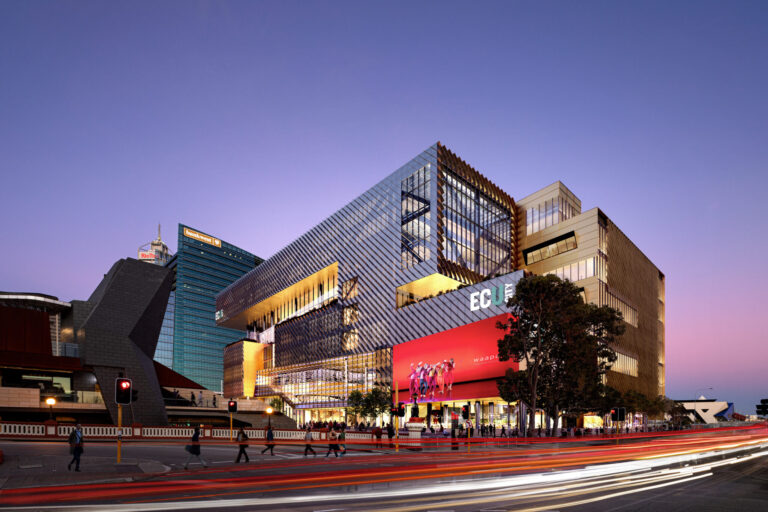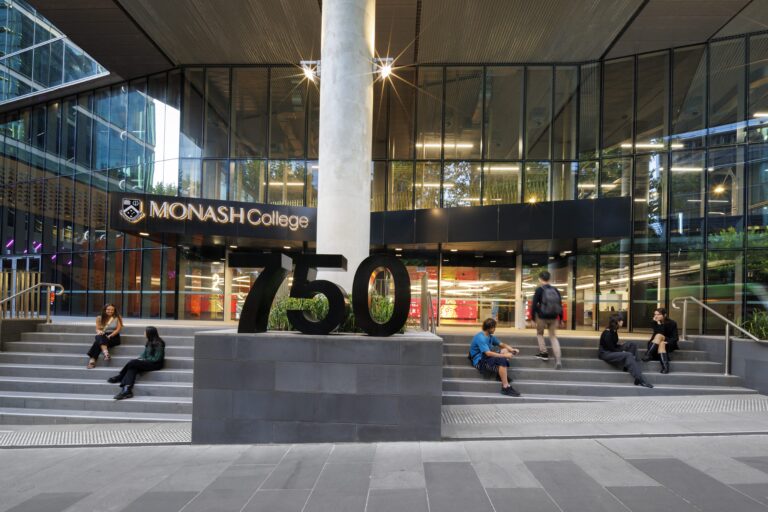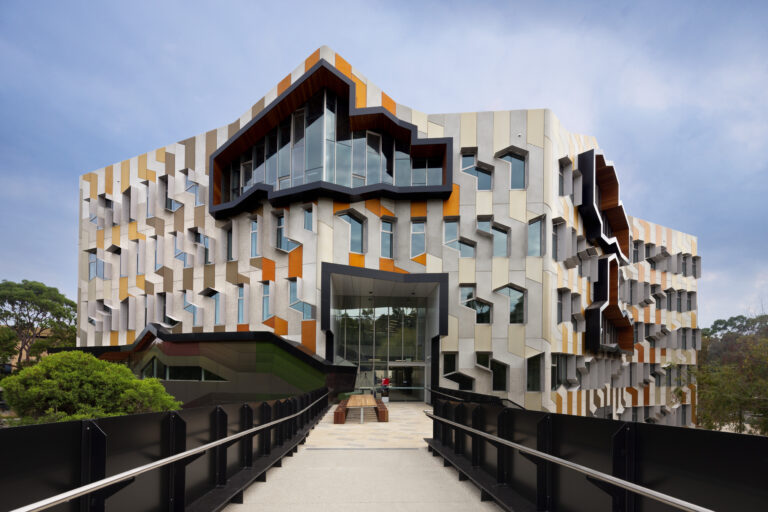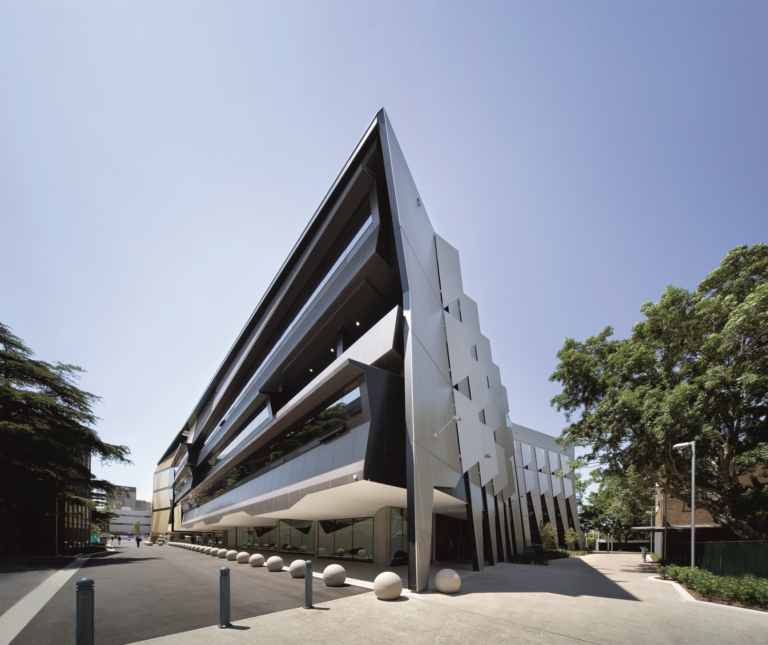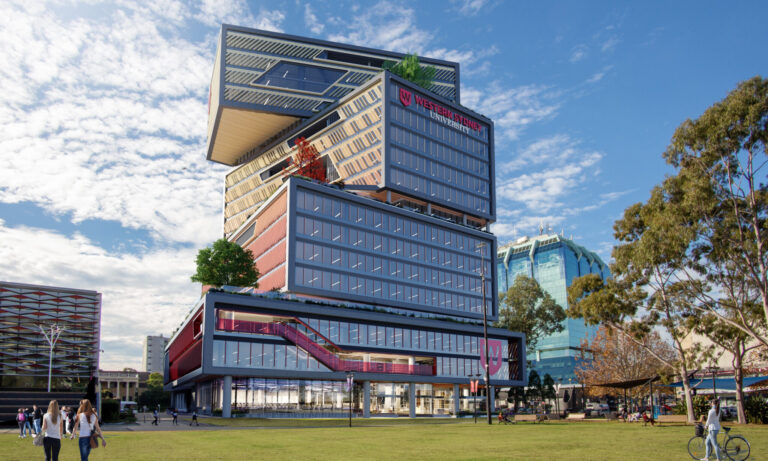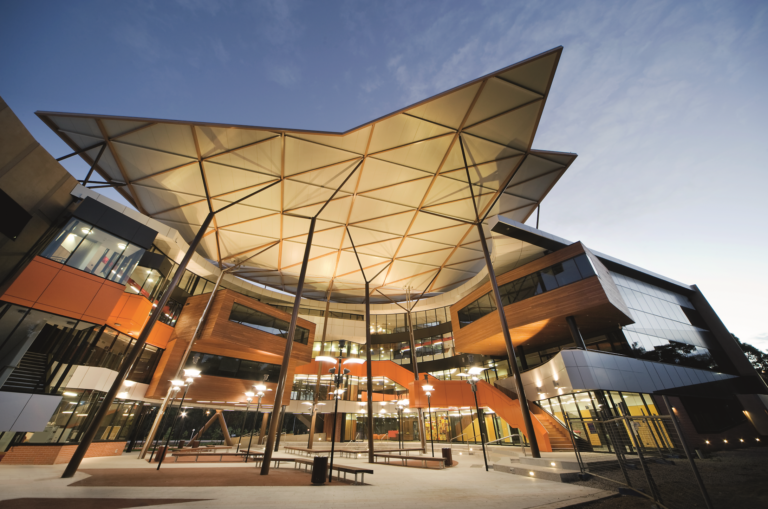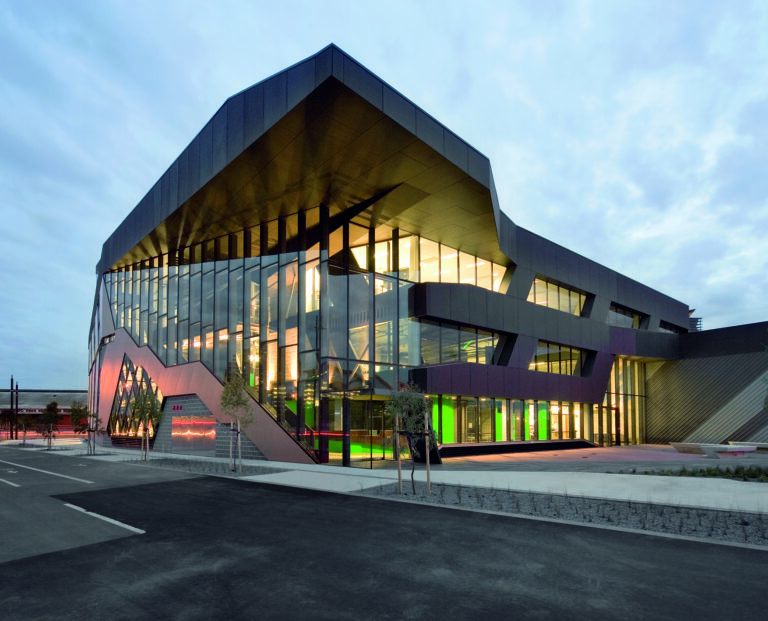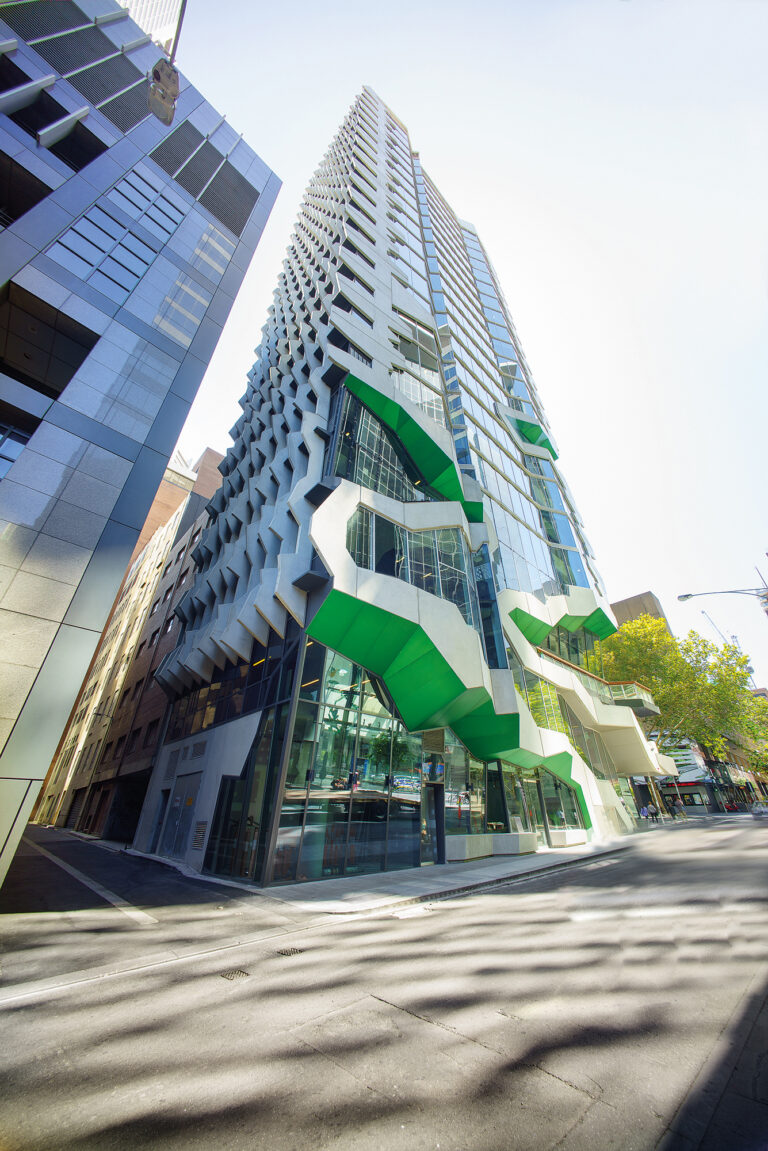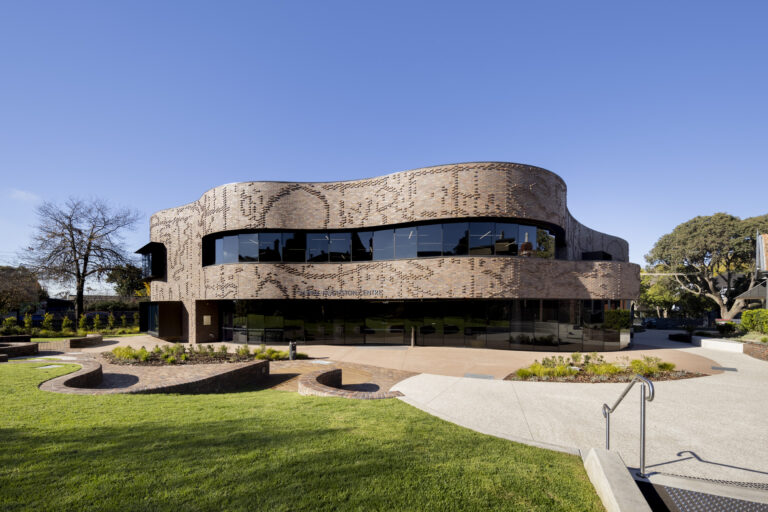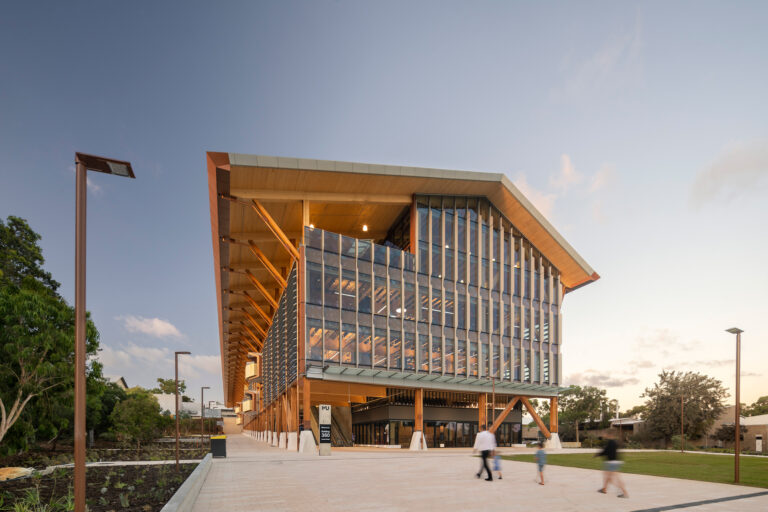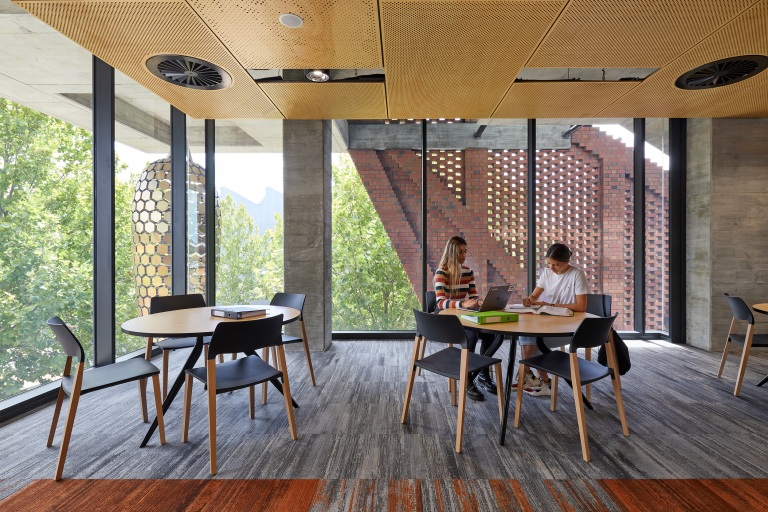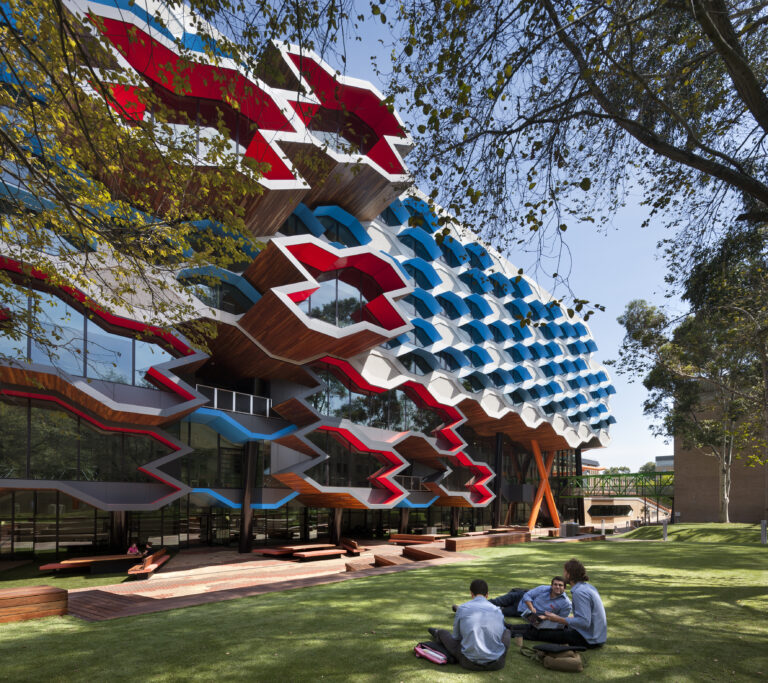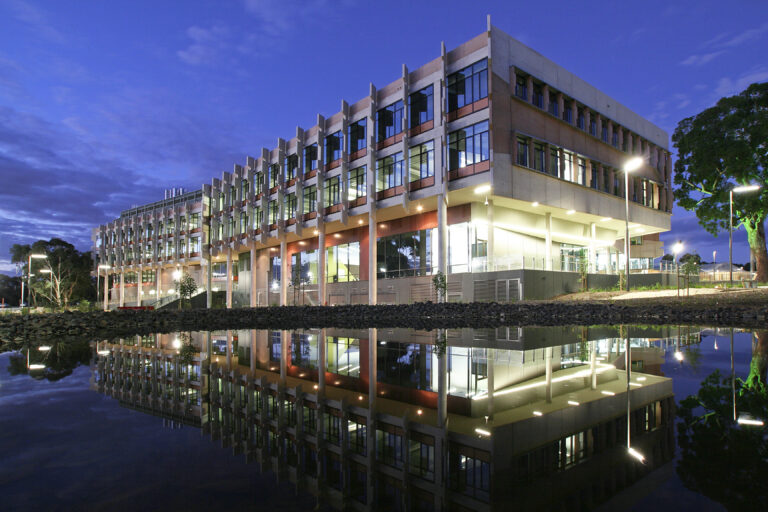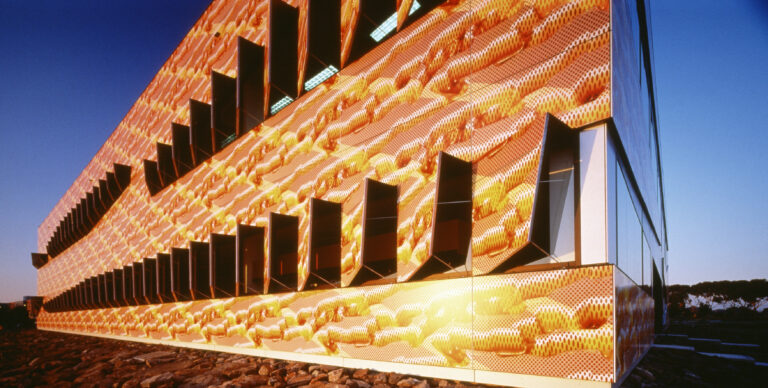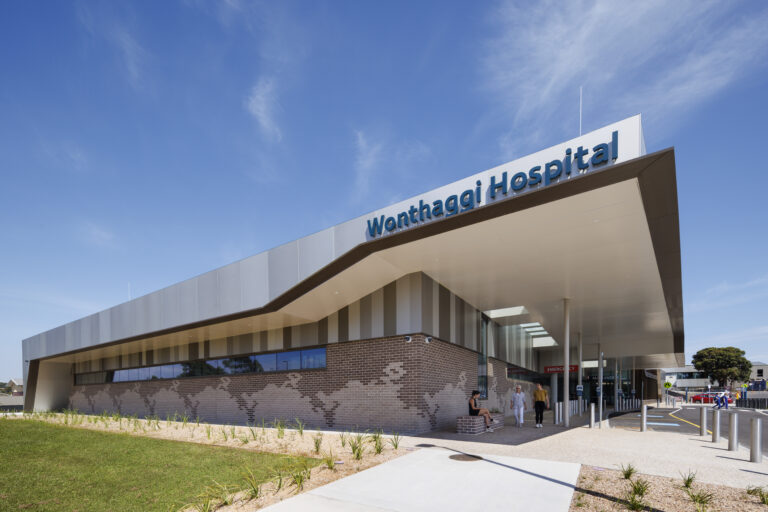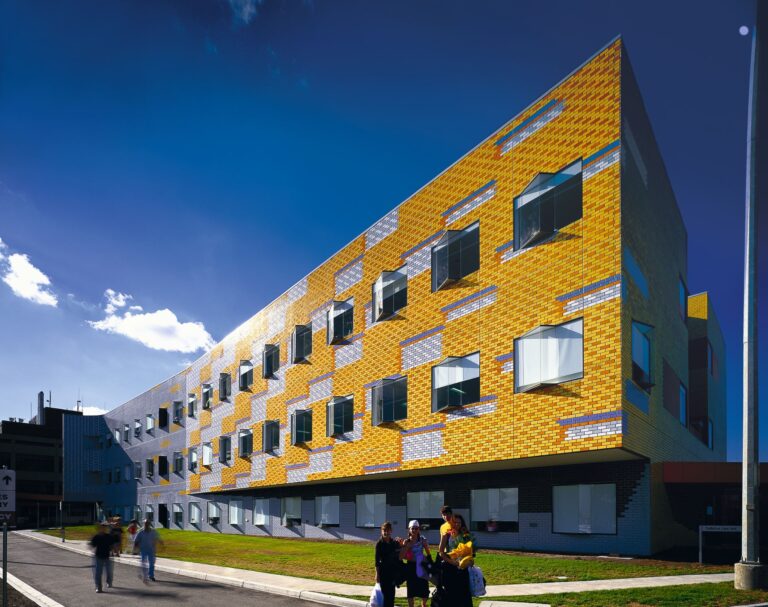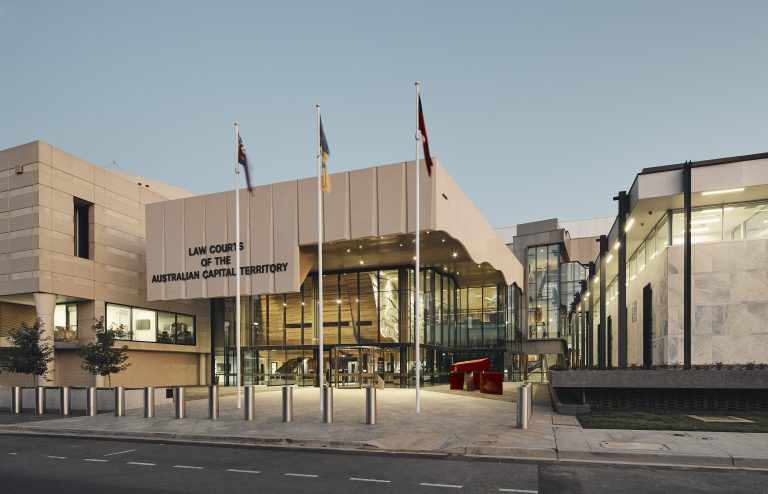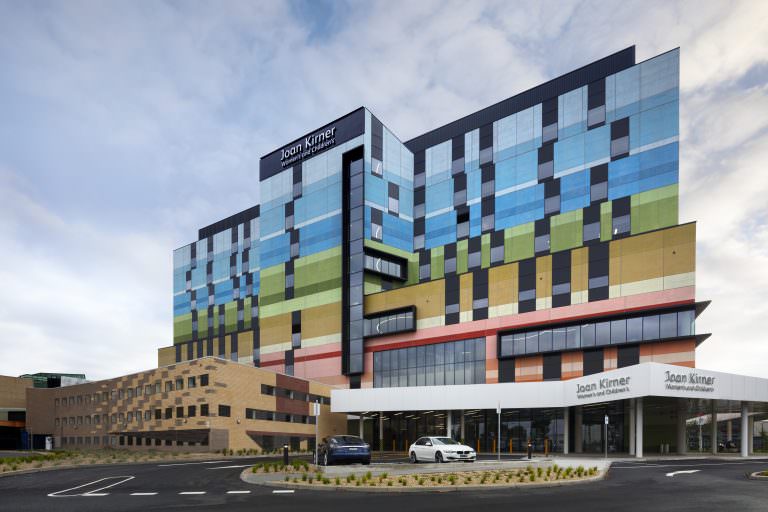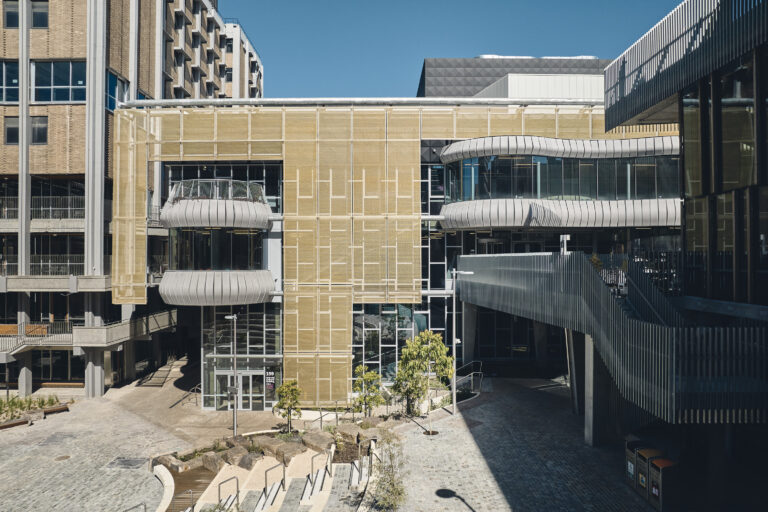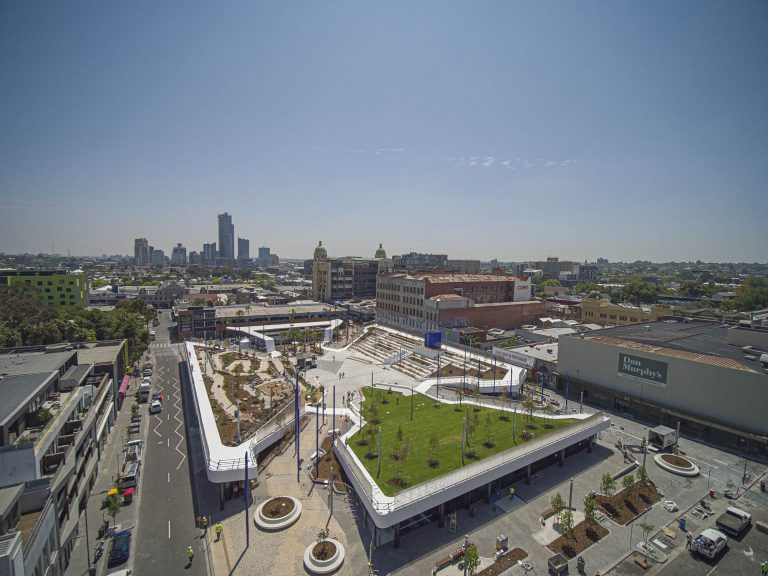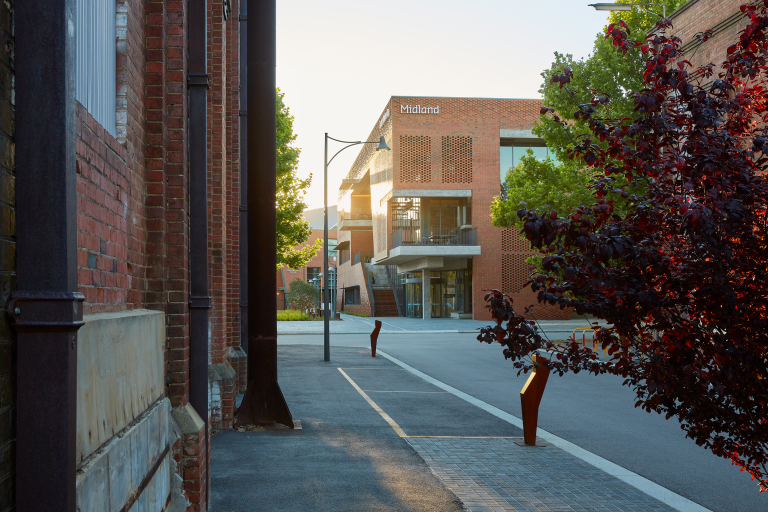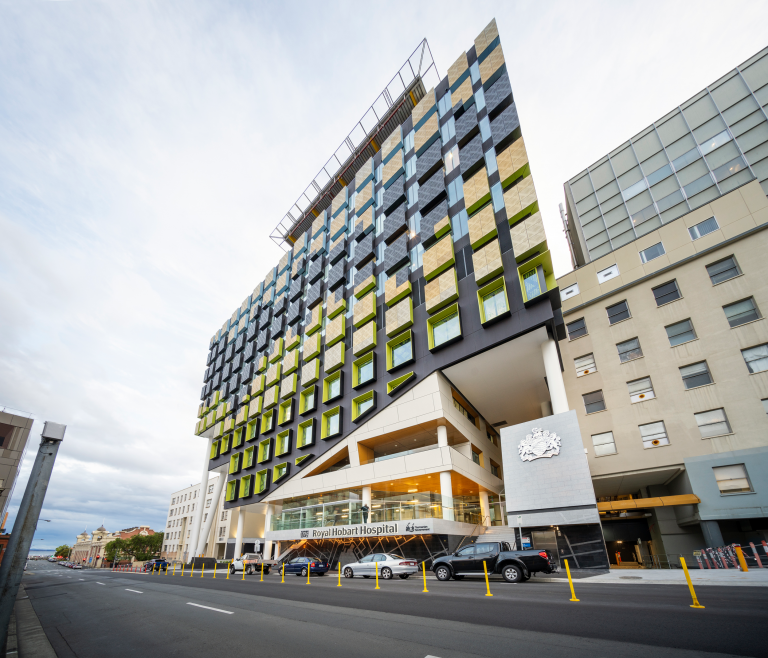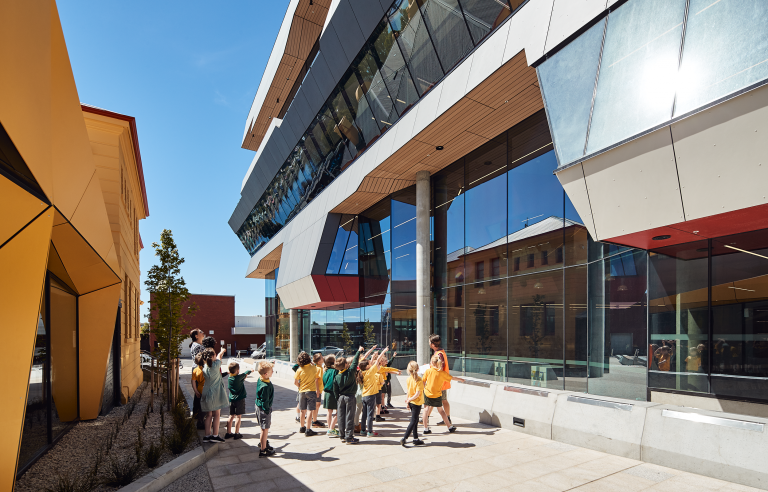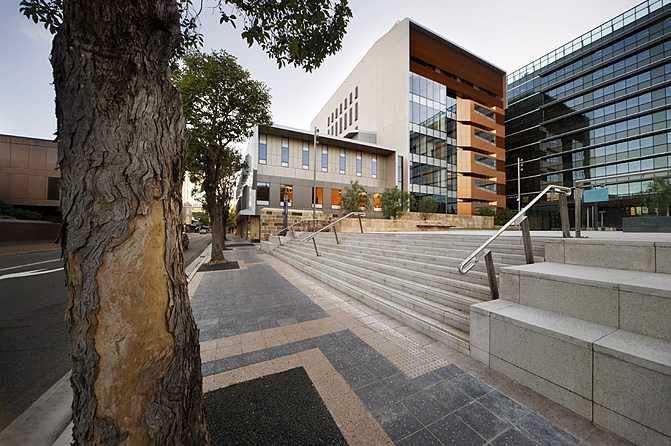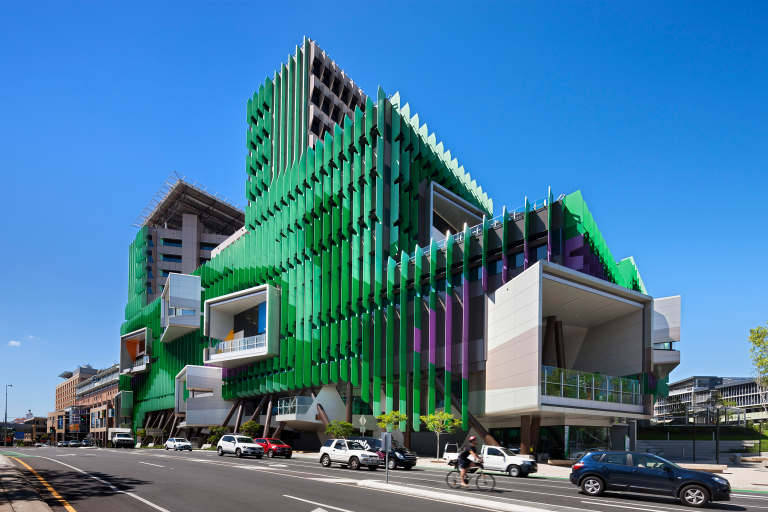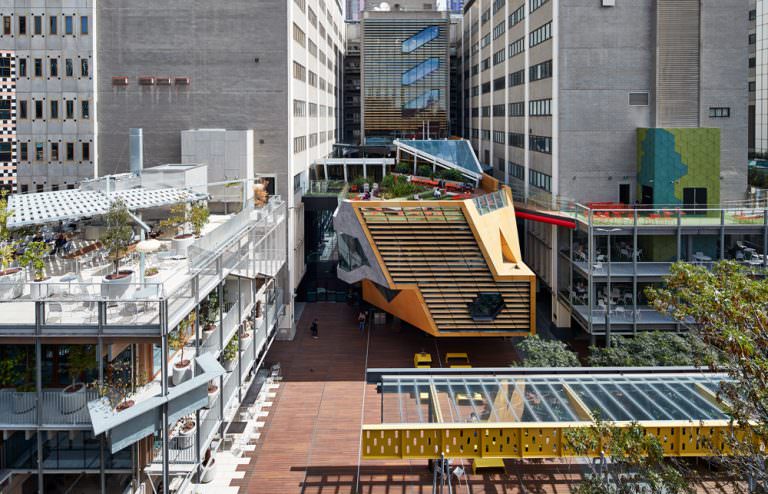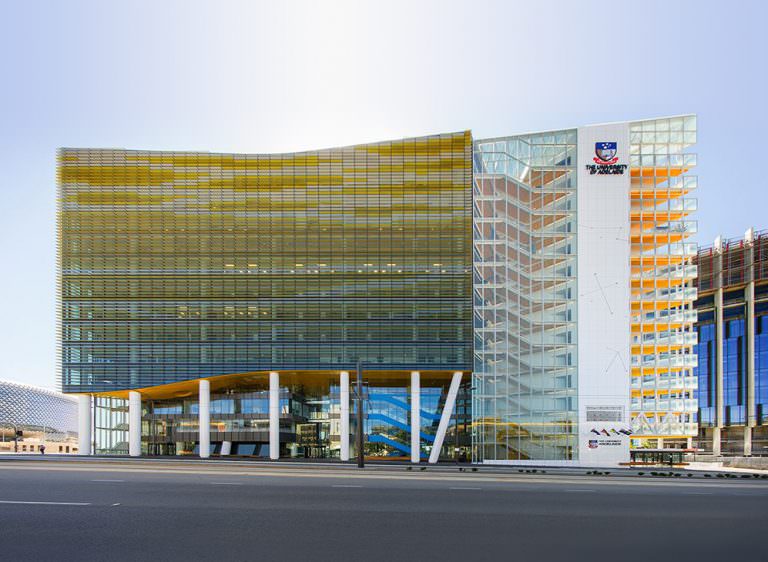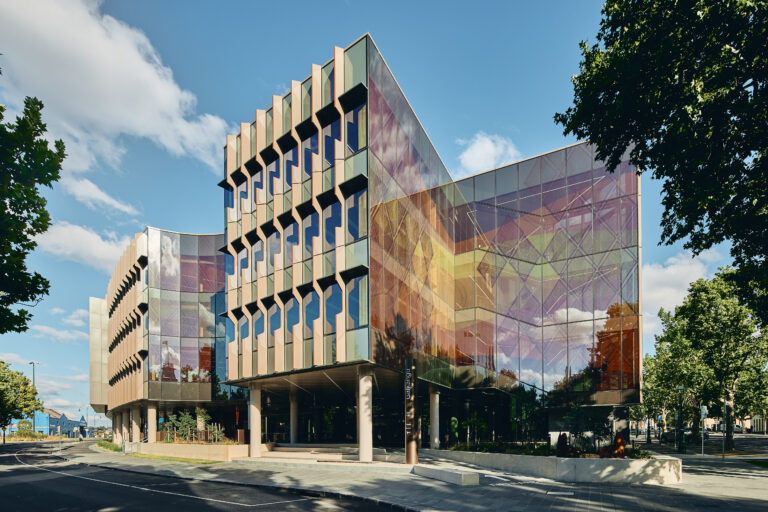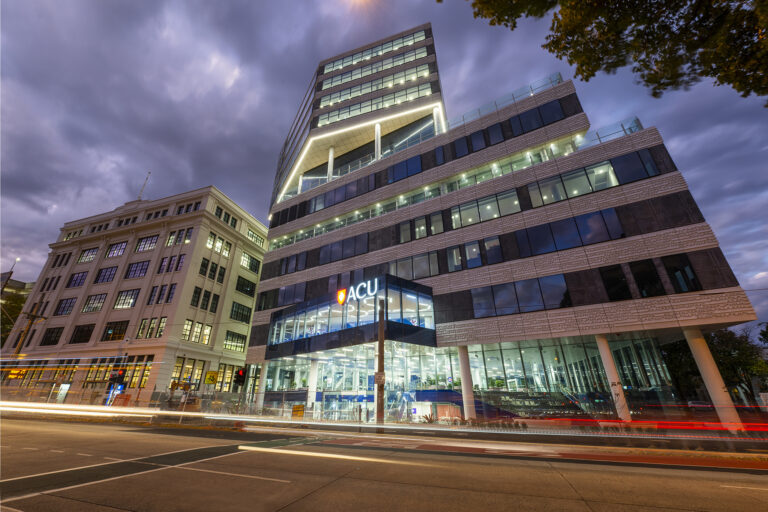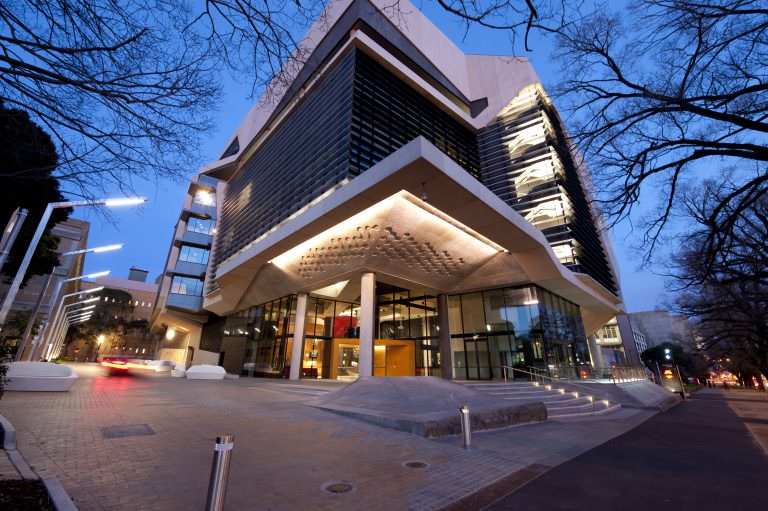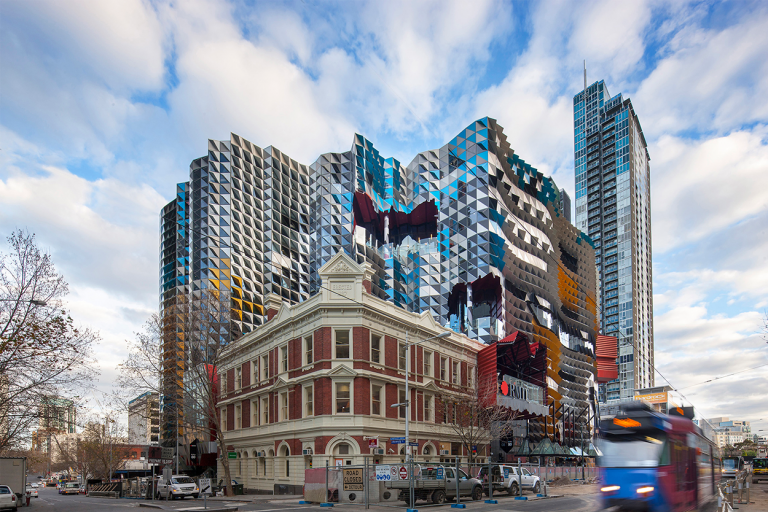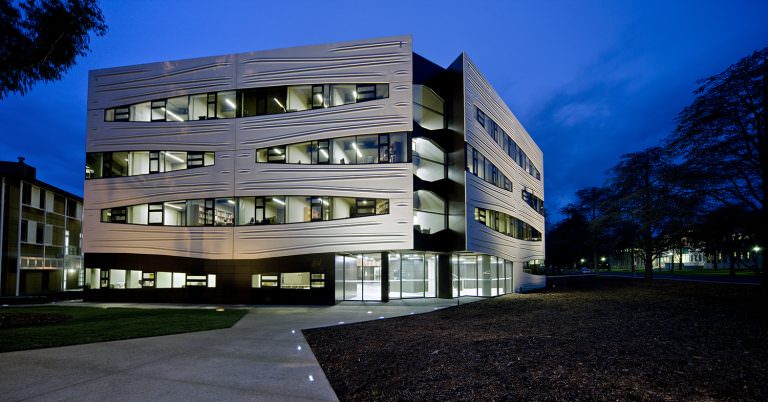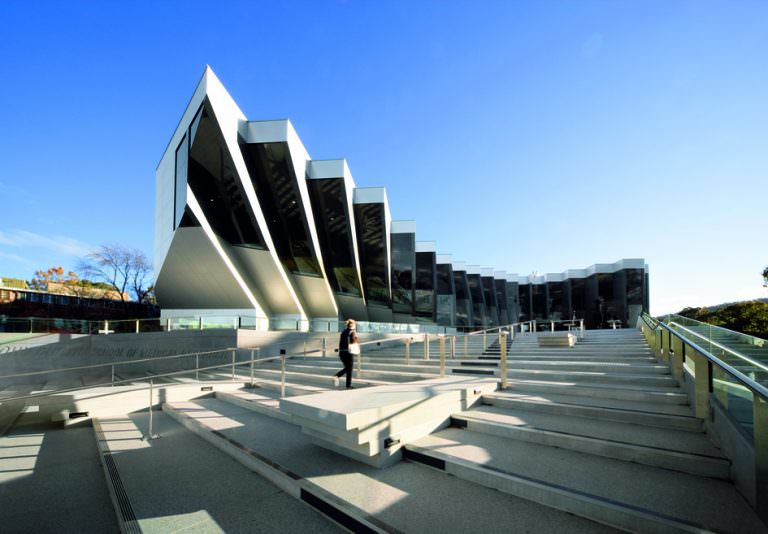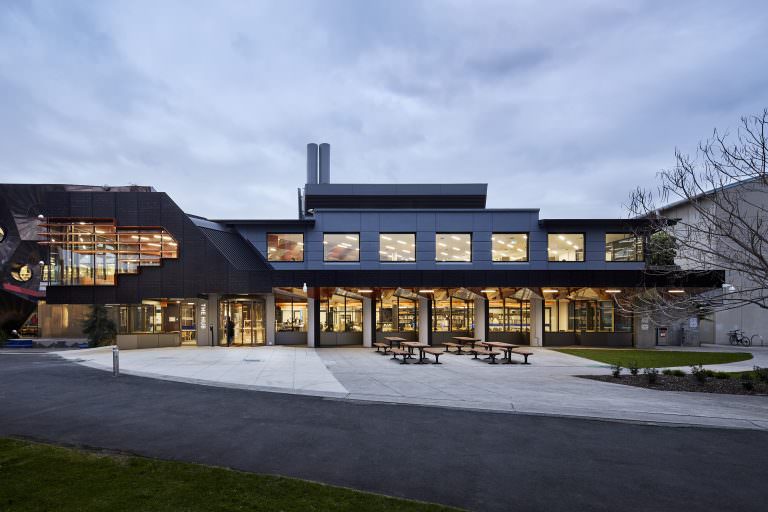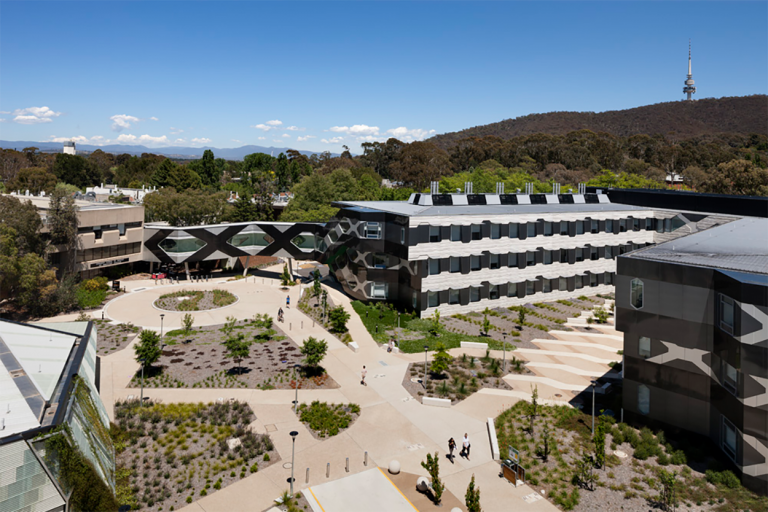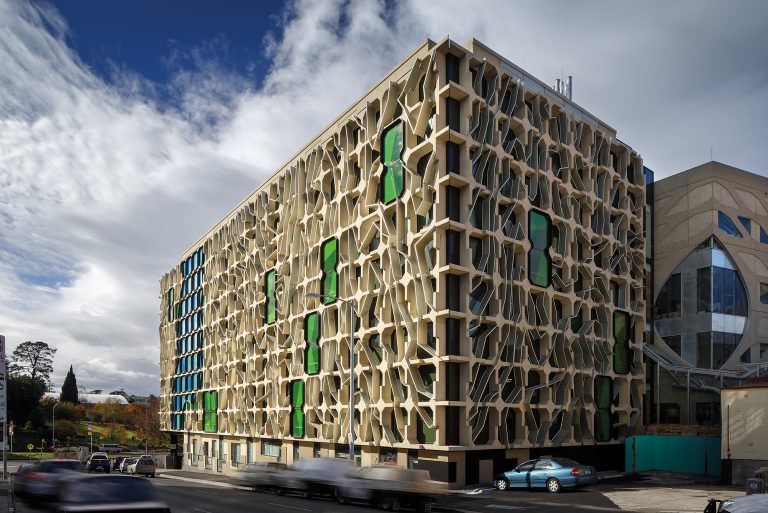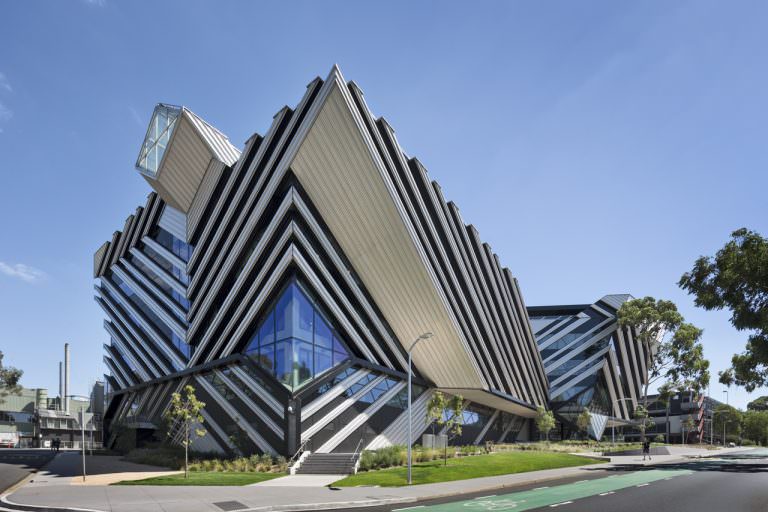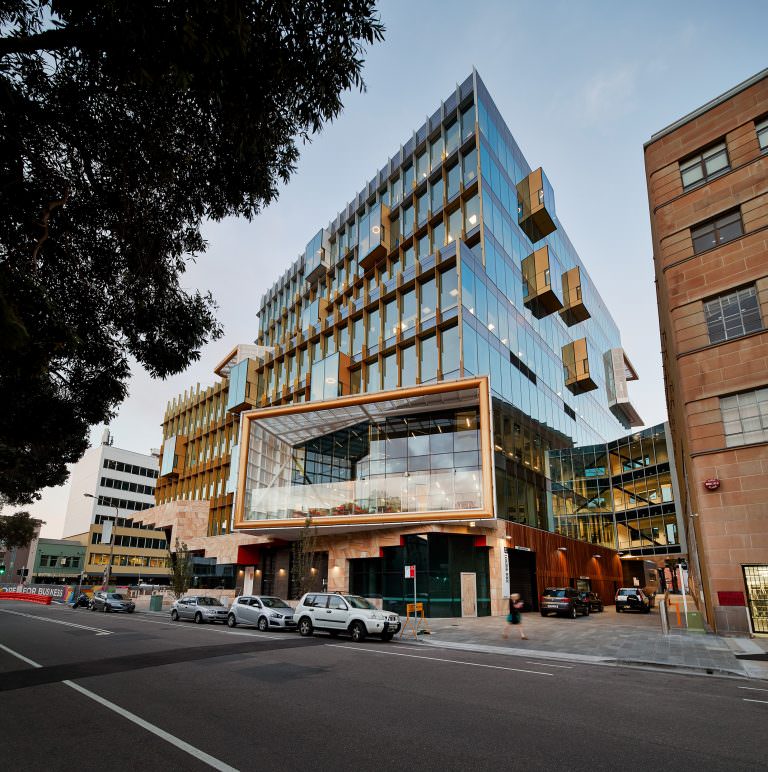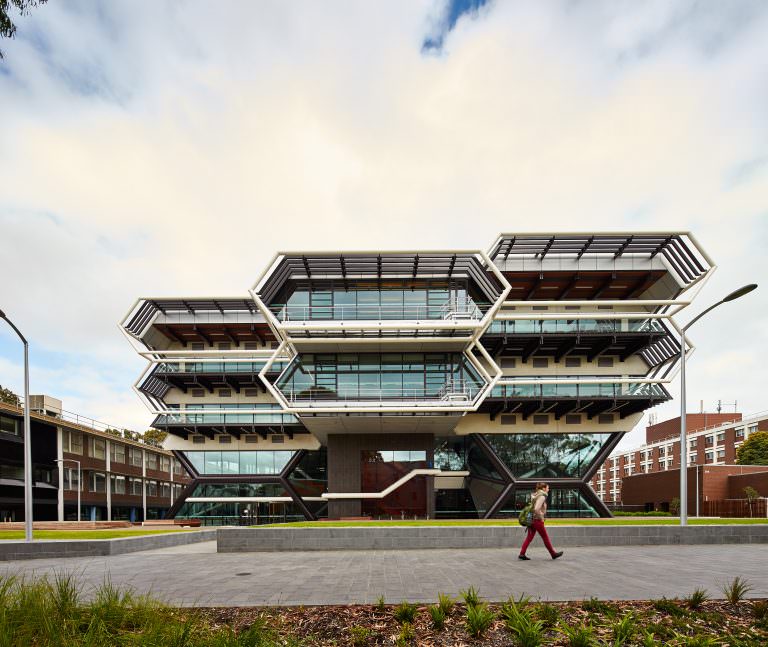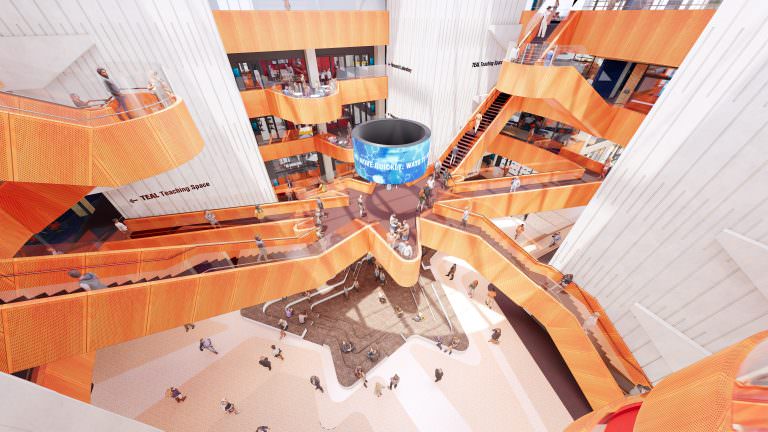Designing a building of public significance
The design of the Adelaide Health and Medical Sciences building makes an important contribution to the life and experience of Adelaide city. We worked with the University of Adelaide on a building that not only paves the way for medical sciences, but also contributes to the broader community.
To ensure our designs met the needs of those using the space, we involved a cross-section of university users in our initial briefing process. This enabled us to prioritise the university’s functional and aspirational objectives while integrating it with the urban environment. Physical transparency can be seen throughout, particularly in the lower levels of the building. This conveys a sense of welcome and openness to students, researchers and the general public.
Hemmed in between railway lines and North Terrace, AHMS sits on the border of the central business and residential district of Adelaide. Home to many of Adelaide’s most well known cultural institutions, North Terrace is a high-traffic space buzzing with energy. To compliment this environment AHMS extends a generous forecourt to North Terrace, blurring the lines between campus and city.
To integrate AHMS further, our design echoes existing features such as terracing, cloisters, connecting stairs, materials and textures. We designed the coloured pattern of the facade’s sunshade to reference the railway lines adjacent to the site. A major component of the design considered the role of the ground plane in creating cohesion between the campus and broader Adelaide community. The inclusion of an urban park with lawn, plantings and trees softens the scale of the AHMS building while seamlessly connecting it to its surroundings.
Another design feature we used to integrate the AHMS building with Adelaide city are the timber-floored Edgescapes. Located on the leading edges of the east and west corners, the Edgescapes act as landscape platforms or terraces creating breakout spaces on every level of the building. They enable visual connections to the city and activation to North Terrace.


